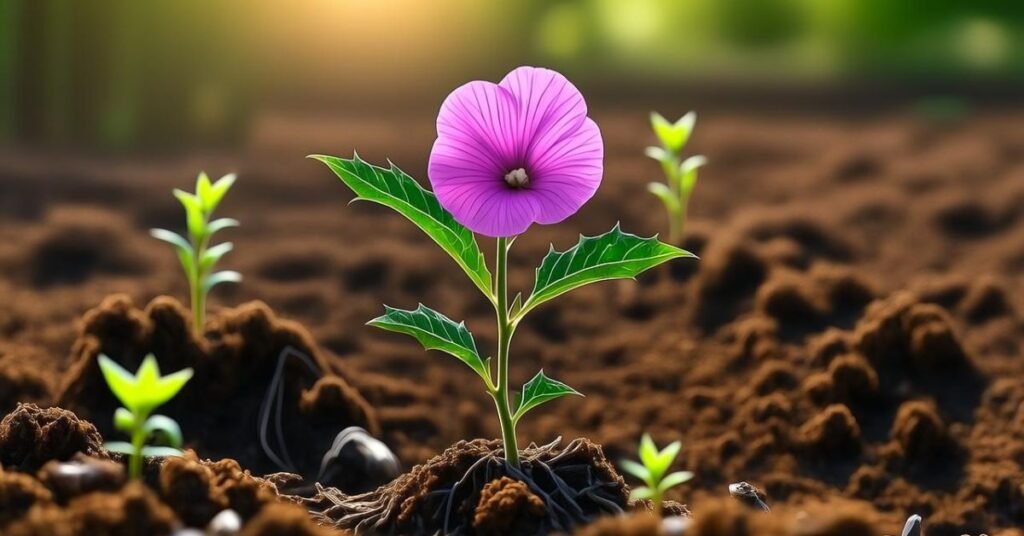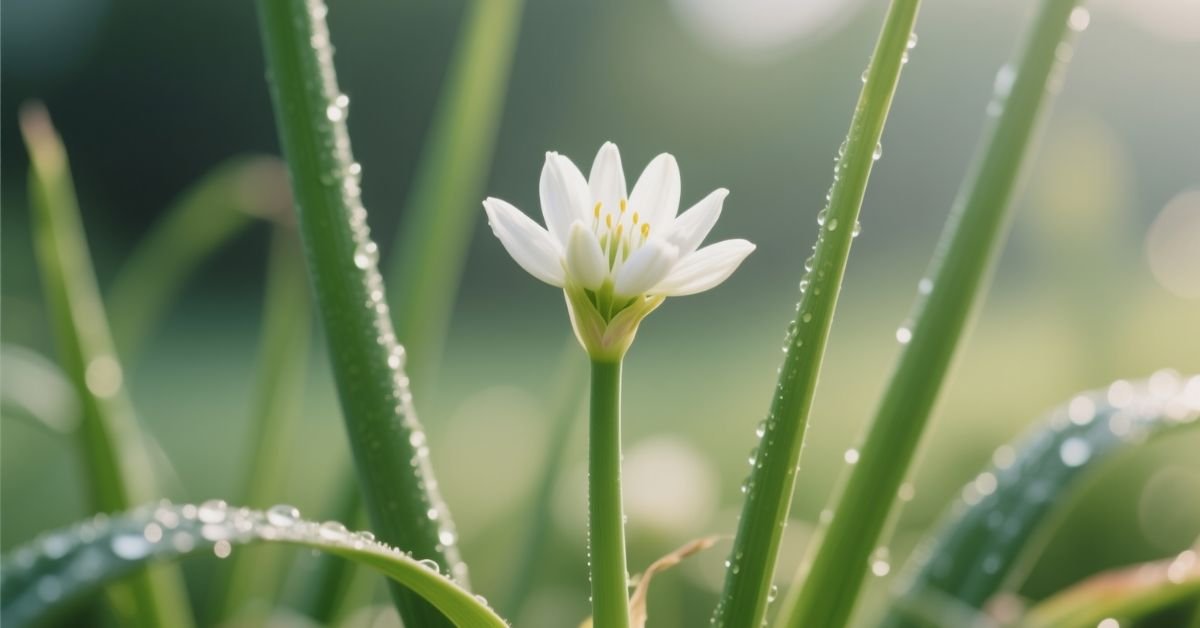Introduction
Flowers on a garlic plant grow at the top of the stem. As part of the plant’s reproductive process, they play an important role. These flowers can produce small seeds, called bulbils. They form inside a round head known as a scape.
Many gardeners wonder if they should let garlic plants flower. The sight of these blooms is beautiful. But flowering can affect the size of the garlic bulbs underground. This creates an interesting choice for growers’ beauty above the ground or bigger bulbs below.
In seed production, flowers on garlic plants can be useful. The bulbils can be planted to grow new garlic plants. However, it may take more time to get a full sized bulb from these seeds compared to planting cloves.
Producing Ornamental Garlic Plants
Ornamental garlic plants are grown for their beauty. They have tall stems and round, colorful flower heads. These flowers can be purple, pink, or white. They add charm to gardens and landscapes.
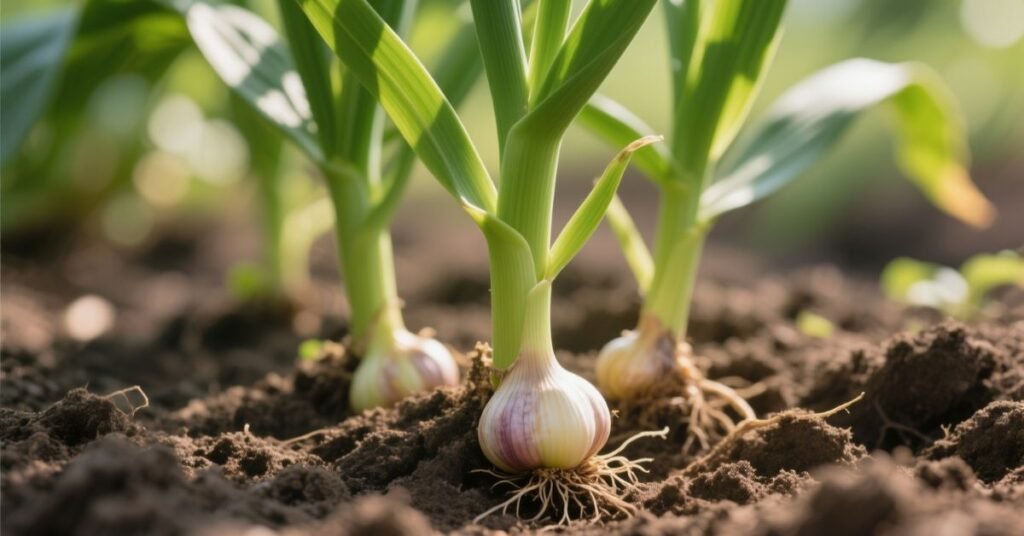
Growing ornamental garlic is simple. Plant them in sunny spots with well drained soil. Water them regularly but avoid waterlogging. Their flowers attract bees and butterflies, making them both pretty and useful in the garden.
Geography/History
Garlic has been grown for thousands of years.Originally from Central Asia, it has spread to other parts of the world.Ancient civilizations like the Egyptians, Greeks, and Chinese used it for food and medicine. Garlic spread across continents through trade and migration.
There are many places around the world where garlic is grown today. It thrives in mild climates with sunny days. Countries like China, India, and the United States are major producers. Its long history shows its value in both kitchens and cultures.
Seasons/Availability
Garlic plants grow in different seasons depending on the region.It is most common to plant them in autumn and harvest them in late spring or early summer. Flowering usually happens in early summer. This stage can vary with climate and variety.
Fresh garlic is available in markets during harvest season. Stored garlic can be found year round. Ornamental garlic flowers are more seasonal, appearing mainly in summer. Availability depends on local growing conditions.
| Season | Activity on Garlic Plant | Availability in Market |
| Autumn | Planting cloves | Not available fresh |
| Late Spring | Bulbs mature, flowering starts | Fresh garlic begins to appear |
| Summer | Flowering in full bloom | Fresh and ornamental garlic |
| Winter | Dormant stage | Stored garlic available |
Ethnic/Cultural Info
Garlic holds special meaning in many cultures. In Asian cooking, it is a key flavor in daily meals. In Mediterranean cuisine, it is used in sauces, breads, and stews. Some cultures believe garlic brings protection and good health. For centuries, it has been used in traditional medicine. Garlic’s flowers, while less common in food, are sometimes grown for beauty and symbolism.
Nutritional Value
Garlic is rich in nutrients. It contains vitamins, minerals, and plant compounds. These nutrients support health and boost immunity. Fresh garlic has the highest nutritional benefits.
Key nutrients in garlic include:
- Vitamin C for immune support
- Vitamin B6 for brain and nerve health
- Manganese for bone strength
- Selenium for antioxidant protection
- Allicin, a compound with antibacterial properties
Characteristics
Garlic plants have distinct physical traits. They grow from cloves buried in the soil. Green, flat leaves appear early in the season. In some types, tall stalks develop and carry flowers or bulbils. The blooms are often round and can be white, pink, or purple.
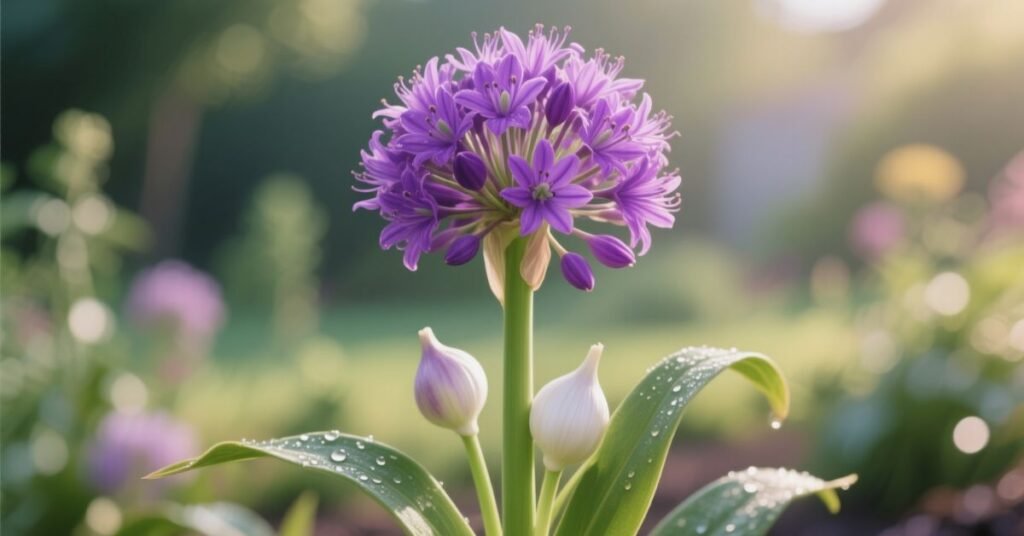
These features make garlic easy to identify. It has a strong smell and taste. Flowers attract pollinators like bees. The plant is both useful in the kitchen and beautiful in gardens.
| Feature | Description |
| Growth Source | Underground cloves |
| Leaf Type | Long, flat, green leaves |
| Flower Stalk | Tall stalks in flowering varieties |
| Flower Shape | Round heads called scapes |
| Flower Color | White, pink, or purple |
| Aroma/Flavor | Strong and distinctive |
| Pollinator Attraction | Bees and other beneficial insects |
What to Do if My Garlic Plant is Flowering
If your garlic plant is flowering, decide your goal. For larger bulbs, cut the flower stalk early. This sends energy back to the bulb. If you want seeds or bulbils, let the flowers grow. Flowering does not harm the plant, but it can reduce bulb size. Choose based on whether you prefer beauty or harvest.
Applications
Garlic plants serve many purposes. The bulbs are a staple in kitchens around the world. They add rich flavor to a variety of dishes. Flowers and scape are also edible and can be used in salads or stir fries. Ornamental garlic is valued for its beauty in landscaping.
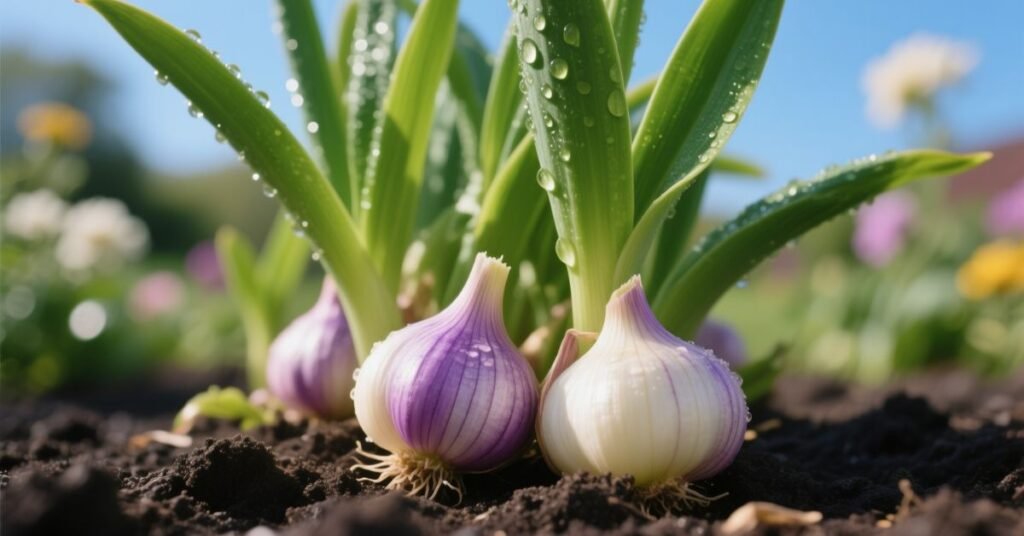
Garlic also has uses beyond cooking. Traditionally, it is used for its health benefits in traditional medicine. Some gardeners plant garlic to repel pests naturally. The seeds or bulbils are used for growing new plants.
| Application Type | Description |
| Culinary Use | Bulbs, flowers, and scapes used in cooking |
| Ornamental Use | Adds color and beauty to gardens |
| Medicinal Use | Traditional remedies for health and immunity |
| Pest Control | Natural repellent for insects in gardens |
| Propagation | Seeds and bulbils used for planting |
Harvesting Flowering Garlic
Harvesting flowering garlic requires timing. If you want larger bulbs, cut the flower stalks early. This keeps energy in the bulb. For seeds or bulbils, let the flowers mature fully before harvesting.
Use clean tools when cutting scapes or flowers. Harvest in dry weather to avoid rot. Store bulbils in a cool, dry place for planting later. Proper harvesting ensures both beauty and a good yield.
Planting and Care
Garlic grows best in sunny spots with loose, well drained soil. Plant cloves in autumn for a summer harvest. Space them a few inches apart. Keep the soil moist but not waterlogged.
Basic care tips include:
- Plant in full sunlight
- Use fertile, well drained soil
- Water regularly, but avoid overwatering
- Remove weeds to prevent competition
- Cut flower stalks for bigger bulbs if desired
How to Avoid Garlic Flowering in the Future
To avoid garlic flowering, choose varieties less likely to bolt.Make sure you plant at the right time for your climate. Avoid stressing the plants with drought or poor soil. Keep them well watered and fertilized during growth. Harvest on time to prevent late season flowering.
Current Facts
Garlic is grown in many countries around the world. China is the largest producer, followed by India and Bangladesh. Both culinary and ornamental varieties are available.The flowering garlic plant is often used as a decorative plant as well as a seed producer.
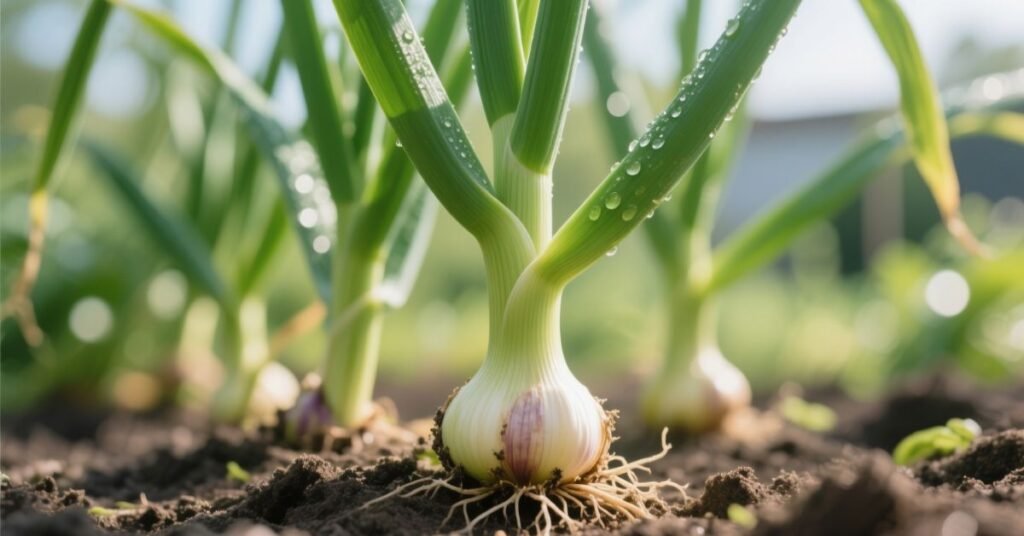
Current key facts include:
- China produces over 70% of the world’s garlic
- Garlic flowers attract bees and other pollinators
- Bulbils from flowers can grow into new plants
- Flowering can reduce bulb size if not managed
- Ornamental garlic is popular in landscaping
Conclusion
Garlic plants are both useful and beautiful. Their flowers add charm to gardens and attract pollinators. However, flowering can affect bulb size. Gardeners must decide whether to keep the blooms or focus on harvest. With proper care, garlic can provide flavor, beauty, and seeds for future planting.
FAQs
1. Should I remove flowers from my garlic plant?
Yes, if you want bigger bulbs. Removing flowers keeps energy in the bulb.
2. Can I eat garlic flowers?
Garlic flowers and scapes are edible and taste mildly garlicky.
3. Do garlic plants need full sun?
Well drained soil and full sunlight are the best conditions for growing garlic.
4. How long does it take for garlic to grow from bulbils?
It can take 2 to 3 years for bulbils to produce full sized bulbs.
5. When is the best time to plant garlic?
Plant in autumn for a summer harvest in most regions.

